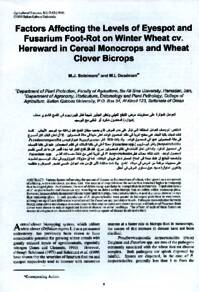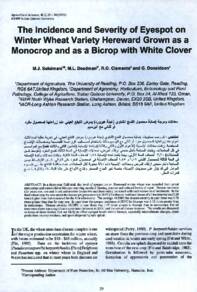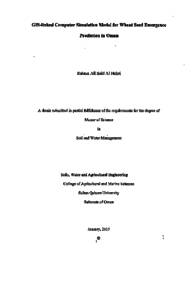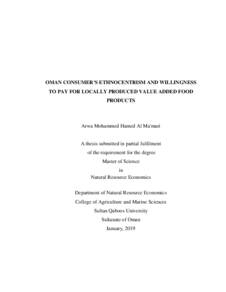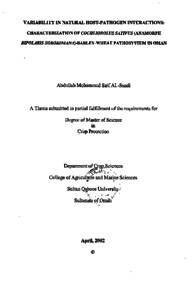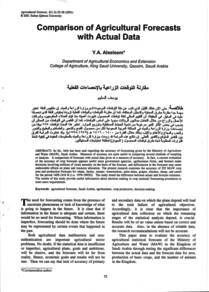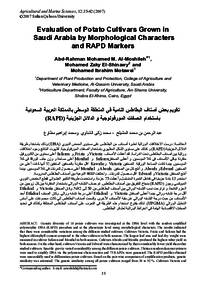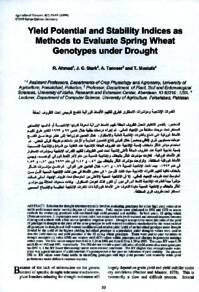Document
Factors affecting the levels of eyespot and fusarium foot-rot on winter wheat cv. hereward in cereal monocrops and wheat clover bicrops.
Contributors
Deadman, M. L., Author
Publisher
Sultan Qaboos university
Gregorian
1999
Language
English
English abstract
Various factors influencing the amount of discase on the stem-base of wheat, when grown as a component of a bicrop, with white clover, arc described. The amount of crop debris on the soil surface remained higher in monocrop than bicropped plots. Furthermore, the rate of debris decay was faster in bicrops than in monocrops. Population levels of P. herpotrichoides and Fusarium spp. were higher on debris within bicrops than on debris within monocrop plots. However, because debris decomposition was morc rapid in bicrops, inoculum availability was of shorter duration in bicrops than monocrop plots. In soil, populations of P herpotrichoides were greater in bicropped plots than in monocrops, although no significant differences were observed for Fusarium spp. population levels. Pathogen cross-infection between bicrop components and changes in microclimate within crop canopies were shown to occur, and isolates of Fusarium from clover were shown to induce significant levels of disease on cereal seedlings. The effects of each of these factors on discase development are discussed in relation to previous reports of disease levels in the field.
Member of
ISSN
2410-1079
Resource URL
Citation
Soleimani, M. J., & Deadman, M. L. (1999). Factors affecting the levels of eyespot and fusarium foot-rot on winter wheat cv. hereward in cereal monocrops and wheat clover bicrops. Journal of Agricultural and Marian Sciences, 4 (2), 7-12.
Arabic abstract
تم وصف العوامل المختلفة التي تؤثر على مدى المرض الذي يصيب سيقان القمح عند زراعته مع البرسيم الأبيض. لقد كانت كميات بقايا النبات على سطح التربة في نظام المحصول الواحد أعلى منها في حالة المحصولين. إلا أن تعفن البقايا كان أسرع في حالة المحصولين عنها في المحصول الواحد. وقد بلغت كثافة فطر سيدوسيركوبوريلا هيبوتركويدس Pseudocercosporella herpotrichoicles) ) وفطر فيوساريوم (Fusarium spp. ) معدلا أعلى في بقايا النباتات في نظام المحصولين عنها في بقايا النبات في المحصول المنفرد. ولما كان تحلل النباتات في نظام المحصولين أسرع، فقد ظل لقاح الفطر فيه لمدة أقصر عن ما هو في نظام المحصول الواحد. كانت كثافة معدلات فطر P . Herpotrichoides في التربة أعلى من كثافة معدلات قطر . Fusarium spp. وأوضحت النتائج أن هناك تبادلا في المناخ المصغر داخل عروش النباتات، كما أن معزولات الفيوزاريوم في نبات البرسيم احتوت على مستويات مرتفعة من المرض في نبيتات القمح. وقد تمت مناقشة تأثير كل من هذه العوامل على تطور المرض وعلاقته بالتقارير المتوفرة مسبقا حول مستوى المرض في الحق.
Category
Journal articles

